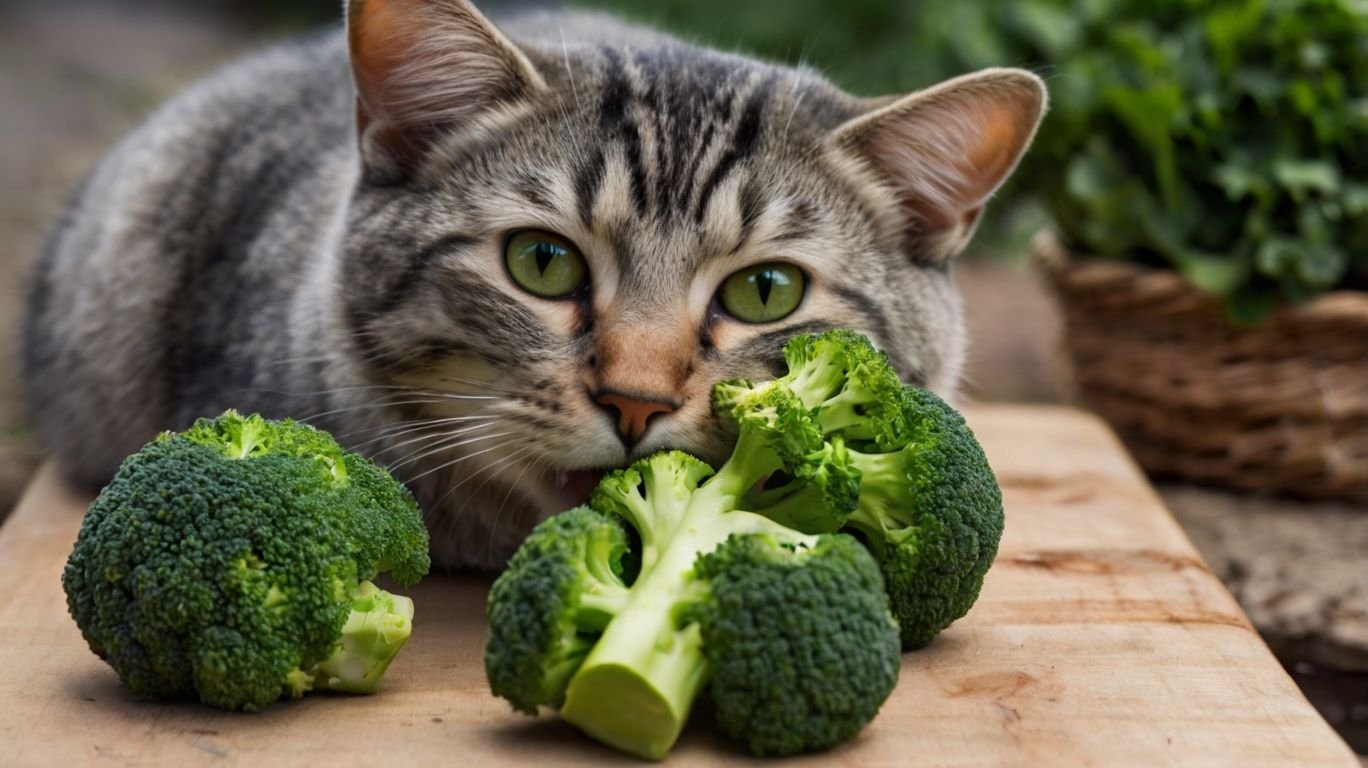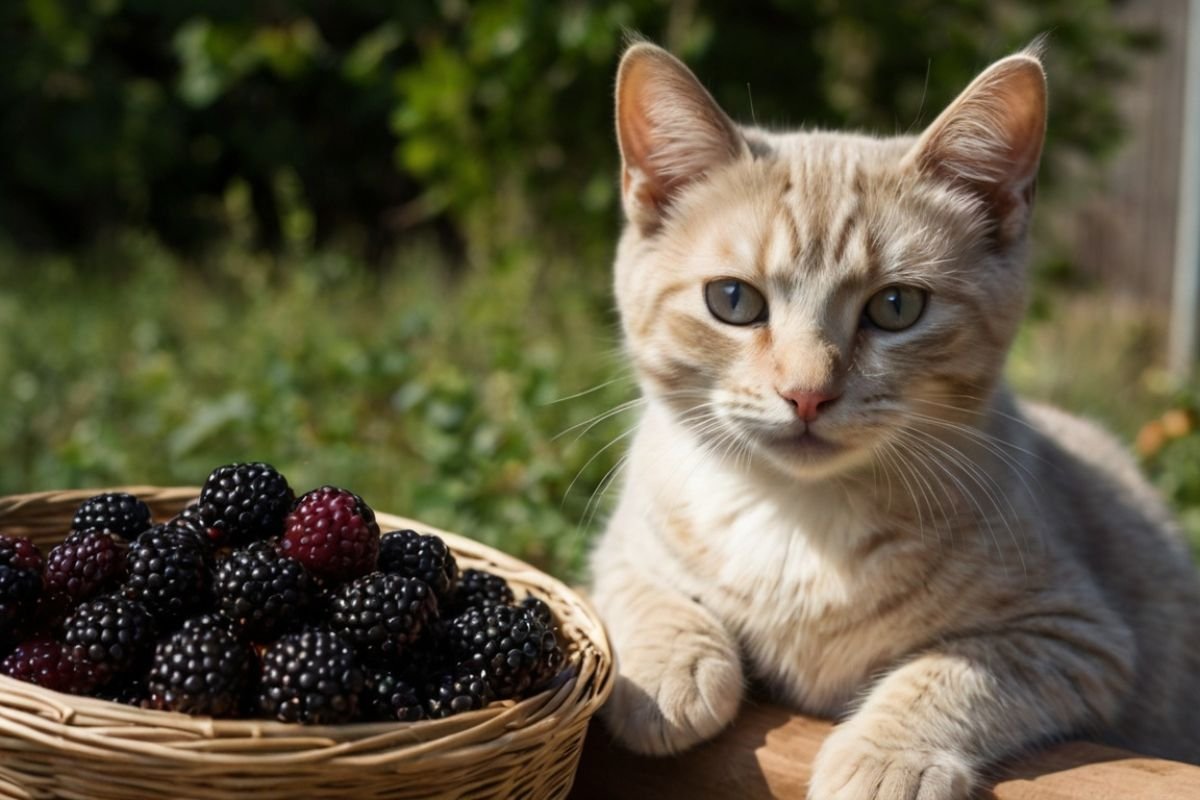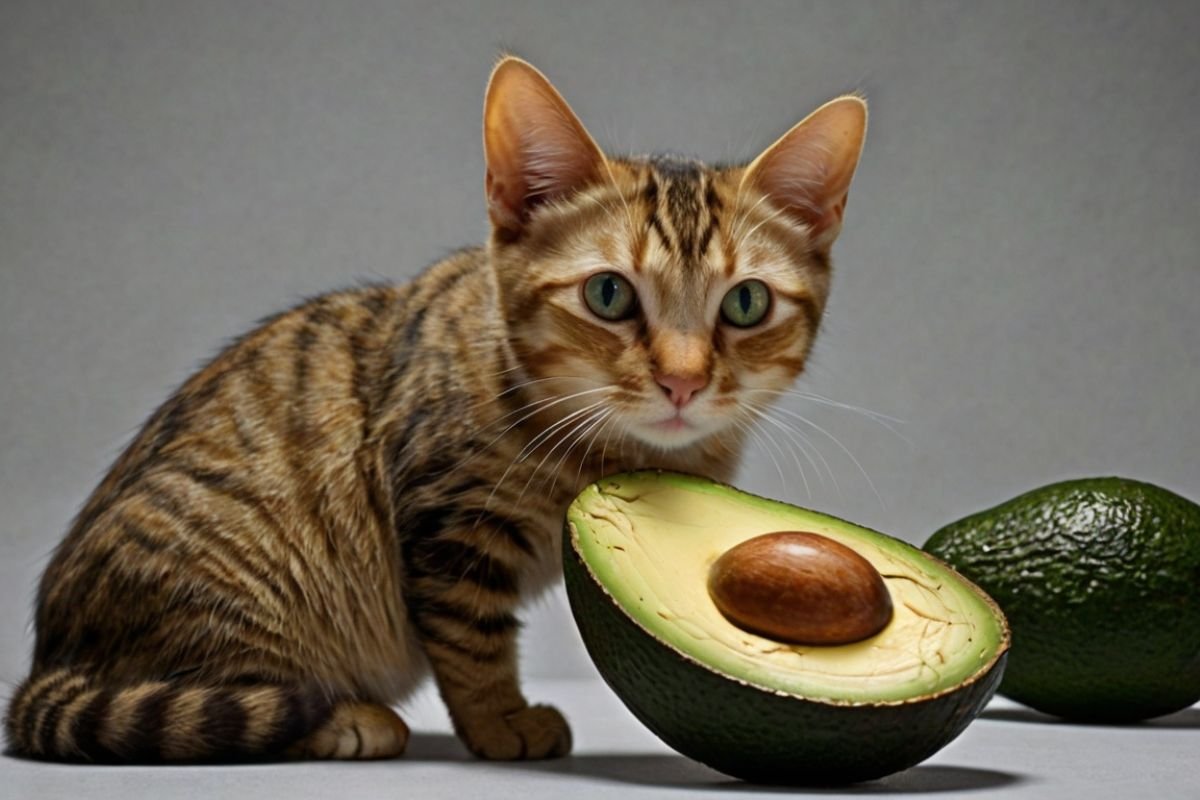Picture this: It’s dinnertime. I’m chopping fresh tomatoes for my salad when I feel those golden eyes watching me. It’s Rio, my sweet orange boy, sitting there with his head slightly tilted, observing my every move with that mysterious feline gaze. Though he’s never once tried to snatch a tomato slice (thank goodness!), those curious looks always make me wonder – what if he did? Would those juicy red fruits hurt my furry little buddy?
I bet I’m not alone in this worry. As cat parents, don’t we all find ourselves constantly wondering what’s safe for our fur babies? We love them so deeply that even the smallest dietary question becomes a matter of heartfelt concern. Tomatoes sit in that confusing middle ground that keeps us guessing. So today, let’s chat about cats and tomatoes – not just from what science tells us, but from one worried cat parent to another.
Table of Contents
When Curiosity Meets the Kitchen: Our Cats and Our Food
Don’t you just love how cats investigate everything? There’s Rio, my little orange shadow, who follows me into every room with that adorable mix of caution and boldness that only cats seem to master. While he sniffs curiously at tomatoes on my cutting board, he’s never shown any real desire to taste them. But I know from talking with fellow cat-loving friends that not all felines are so restrained!
Our kitties are natural explorers. They poke their whiskers into everything, batting at strange objects and sometimes (heart attack moment!) putting things in their mouths that make us lunge across the room shouting “NO!” faster than we knew we could move. It’s this beautiful, sometimes terrifying curiosity that makes us love them so much – and also keeps us constantly on our toes.
Most cats don’t actually crave plant foods. They’re meat lovers through and through – something I’m reminded of every time Rio does his special “dinner dance” when he hears the rustle of his food bag. Yet some kitties do show interest in our fruits and veggies, including those bright tomatoes that find their way into so many of our meals.
And that’s why this question matters so much. It’s not just academic curiosity. It’s about protecting those little beings who’ve completely stolen our hearts. When your cat looks up at you with those loving eyes, don’t you feel responsible for keeping them safe from all harm – even the hidden dangers in something as innocent-seeming as a tomato?
The Bottom Line: Can They or Can’t They?

Let me skip right to what you’re probably most anxious about: ripe tomatoes aren’t deadly poison to our kitties, but they’re not exactly something we should be offering them either. The safety issue really comes down to three things – how ripe the tomato is, how much they might eat, and which part of the tomato plant we’re talking about.
The bright red, juicy ripe tomatoes have only tiny amounts of anything potentially harmful. But those green unripe ones? The stems, leaves, and vines? Those parts pack a much bigger punch of compounds that could make your sweet cat feel pretty miserable.
Watching Rio over the years, I’ve noticed something fascinating – he seems to instinctively know to keep his distance. He’s never made any attempt to nibble on tomatoes, which might explain why he’s been blessed with such a happy tummy all his life. When I watch him delicately sniff and then turn away from tomatoes, I sometimes wonder if our cats are so much wiser than we give them credit for. Their instincts, honed over thousands of years, often steer them right where food is concerned.
Also read, Can Cats Eat Jade Plants?
The Villains of Our Story: Solanine and Tomatine
I remember the first time I learned about these substances in tomatoes – I was horrified! Here I was, eating tomatoes almost daily, while potentially dangerous compounds lurked inside them. But don’t worry, I’m not about to tell you to throw out all your tomatoes!
Solanine and tomatine are the troublemakers in this tale. They’re natural toxins that tomato plants make to defend themselves against pests and diseases. Think of them as the plant’s personal security system. These compounds concentrate most heavily in:
- Those hard green unripe tomatoes
- The leafy stems and vines
- The delicate tomato leaves
- The pretty little tomato flowers
Nature is pretty clever, though. As tomatoes ripen and turn that beautiful red color, these defensive compounds fade away significantly. That’s why if your cat took a tiny lick of your ripe garden tomato, it’s much less concerning than if they chewed on a tomato plant or bit into a green tomato.
What might happen if your precious kitty got into these toxins? These compounds can mess with their nervous system and damage cell structures. If they consumed enough, you might notice:
- Tummy troubles like vomiting or diarrhea (every cat parent’s cleanup nightmare)
- Lethargy – that concerning “my cat’s not acting like themselves” behavior
- Confusion or strange behavior changes that break your heart to witness
- Slower heart rate that would have you rushing to the vet
- Dilated pupils making their eyes look strange
- Excessive drooling that’s definitely not normal
The silver lining here? Your sweet cat would need to eat quite a bit of the green parts or unripe tomatoes to get seriously sick. A tiny taste of ripe tomato or a small lick of sauce likely won’t cause a crisis. But as I always think when watching Rio – why take chances with someone you love so much when there’s simply no need?
Cats as Carnivores: Why Tomatoes Don’t Fit
To better understand why tomatoes aren’t ideal for cats, we need to consider feline biology. Cats evolved as specialized hunters with digestive systems perfectly tuned for processing meat. Unlike humans and some other pets, cats are what scientists call “obligate carnivores.”
This means their bodies require nutrients found only in animal tissues. They lack certain enzymes needed to efficiently process plant matter. Their digestive tracts are shorter than those of omnivores or herbivores, designed for quick processing of meat rather than the lengthy fermentation needed to break down plant cell walls.
When you understand this biological reality, it becomes clear why Rio and most cats don’t naturally gravitate toward tomatoes and other plant foods. Their bodies simply aren’t designed to derive significant nutrition from them.
Some key nutritional facts about cats:
- They require taurine, an amino acid found only in animal proteins
- They can’t convert plant-based vitamin A precursors efficiently
- They need animal-sourced arachidonic acid
- Their taste buds lack sweet receptors, so fruits hold little appeal
This explains why even if tomatoes were perfectly safe, they wouldn’t contribute meaningfully to your cat’s diet. Cats simply don’t need what tomatoes offer.
The Acidity Factor: Another Reason for Caution
Beyond the specific toxins in tomatoes, there’s another reason to be cautious: acidity. Tomatoes are naturally acidic foods, with pH values typically ranging from 4.0-4.5. This acidity can irritate a cat’s digestive tract, potentially causing:
- Stomach discomfort
- Acid reflux
- Mouth irritation
- Digestive upset
This may explain why most cats, including my Rio, tend to avoid tomatoes naturally. The sour, acidic flavor profile doesn’t appeal to their taste buds, which evolved to prefer the savory, umami flavors of meat.
Cats with sensitive stomachs or existing digestive issues are particularly vulnerable to the effects of acidic foods. If your cat already struggles with hairballs, inflammatory bowel disease, or other gastrointestinal problems, even small amounts of tomato could trigger a flare-up.
Tomato Products: Hidden Dangers
The risk doesn’t stop with fresh tomatoes. In fact, processed tomato products often pose even greater dangers to cats. Here’s why:
Tomato Sauce and Soup
These typically contain onions and garlic, which are toxic to cats even in small amounts. They damage red blood cells and can cause anemia.
Ketchup
Beyond tomatoes, ketchup contains sugar, salt, and various spices—none of which benefit cats and some of which can be harmful.
Canned Tomatoes
Often preserved with salt and sometimes additional ingredients, the sodium content can be problematic for cats.
Tomato Juice
Usually contains added salt and sometimes other flavorings that aren’t cat-friendly.
One night while making pasta, I dropped a tiny splash of sauce on the floor. Rio approached to investigate but backed away after a single sniff. His reaction seemed to confirm what experts say—cats can often sense when something isn’t right for them. Not all cats share this instinctual wisdom, though, which is why we need to be vigilant.
What Happens If Your Cat Eats Tomatoes?

Let’s say your cat does manage to sample some tomato. What should you expect, and when should you worry?
Scenario 1: A Small Taste of Ripe Tomato
If your cat licks a slice of ripe tomato or takes a small nibble, you’ll likely see no effects at all. Just monitor them for the next 24 hours for any unusual behavior or digestive upset.
Scenario 2: Consuming Green Tomatoes or Plant Parts
This is more concerning. Watch for symptoms of solanine/tomatine poisoning:
- Vomiting within a few hours
- Lethargy or weakness
- Confusion
- Dilated pupils
- Drooling
- Slow heart rate
- Difficulty breathing
Scenario 3: Eating Tomato-Based Products with Other Ingredients
Here, the concern shifts to ingredients like onions, garlic, salt, and spices. Symptoms may develop quickly or over several days and include:
- Vomiting and diarrhea
- Pale gums (from anemia caused by onion/garlic)
- Increased thirst and urination (from salt)
- Lethargy
- Loss of appetite
When to Call the Vet
Don’t hesitate to contact your veterinarian if:
- Your cat ate green tomatoes or plant parts
- They consumed tomato products containing onions or garlic
- They show any concerning symptoms after eating tomatoes
- They have existing health conditions that might be complicated by digestive upset
Even if you’re just worried and unsure, a quick call to your vet provides peace of mind. They might recommend:
- Monitoring at home
- Inducing vomiting (only under professional guidance)
- Coming in for examination
- Supportive care like fluid therapy if needed
It’s always better to be cautious. If Rio ever showed interest in tomatoes and managed to eat some, I wouldn’t hesitate to call our vet—even if just for reassurance.
The Curious Mystery: Why Some Cats Are Attracted to Tomatoes
While Rio stays clear of tomatoes, some cats show unexpected interest. Why the difference? Several theories exist:
Texture and Movement
The firm yet yielding texture of tomatoes might trigger predatory instincts in some cats. Rolling cherry tomatoes especially mimic prey movement.
Temperature
Cold tomatoes from the refrigerator might provide sensory stimulation that some cats find interesting.
Aroma
Though subtle to us, tomatoes emit volatile compounds that certain cats might detect and find intriguing.
Boredom or Curiosity
Sometimes interest in unusual foods simply reflects a cat’s need for mental stimulation and investigation.
Learned Behavior
Cats who see their humans enjoying tomatoes might become curious through observation and social learning.
Whatever the reason, it’s important to remember that interest doesn’t equal dietary need. Even if your cat begs for tomato, they’re better off without it.
Safe Alternatives: What to Offer Instead
If your cat seems unusually interested in plant foods, there are safer options to satisfy their curiosity:
Cat-Safe Greens
- Cat grass (usually wheat, oat, or barley grass)
- Catnip
- Cat thyme
- Valerian
Cat-Safe Vegetables (in tiny amounts)
- Cooked, plain pumpkin
- Cooked carrots
- Steamed broccoli florets
- Cooked green beans
These alternatives provide mental stimulation and enrichment without the risks associated with tomatoes. Rio hasn’t shown interest in vegetables, but he does enjoy the occasional pot of cat grass I grow for him!
Tomatoes in Commercial Cat Food: Should You Worry?
You might notice “tomato pomace” listed in some commercial cat foods and wonder if that contradicts everything we’ve discussed. Tomato pomace consists of the skins, pulp, and seeds left after processing tomatoes for juice and sauces. Manufacturers include small amounts as a source of fiber and sometimes for the antioxidant properties of lycopene.
The key differences between tomato pomace in cat food and fresh tomatoes:
- It’s used in very small quantities
- It’s made from fully ripe tomatoes
- It’s processed to remove most problematic compounds
- It’s tested for safety in pet food formulations
Still, premium cat foods typically don’t contain tomato pomace, instead using animal-sourced ingredients that better match cats’ nutritional needs. If your cat has sensitivities, you might want to choose tomato-free formulations.
Protecting Garden Cats from Tomato Plants
For those with outdoor cats or indoor-outdoor cats like Rio, garden hazards deserve special mention. Tomato plants in your garden pose a greater risk than tomatoes on your plate because cats have access to the more toxic stems and leaves.
To keep garden-exploring cats safe:
Physical Barriers
- Fence off vegetable gardens
- Use row covers or cages around tomato plants
- Create separate, cat-friendly garden spaces away from vegetables
Deterrents
- Citrus peels around plants (most cats dislike citrus smells)
- Commercial pet repellents designed for gardens
- Motion-activated sprinklers
Supervision
- Monitor your cat during garden time
- Train them to avoid certain areas (clicker training works for some cats!)
Alternatives
- Grow cat-friendly plants in accessible areas to distract from tomatoes
- Create appealing lounging spots away from vegetable plants
Rio is primarily an indoor cat, but he enjoys supervised patio time. I’ve arranged his outdoor space with cat-safe plants well away from my small container garden, giving him safe things to explore without risking contact with my tomato plants.
The Science Behind Cat Nutrition: Why Meat Matters Most
To fully understand why tomatoes are unnecessary for cats, let’s briefly explore feline nutritional science. Cats’ ancestral diet consisted almost exclusively of small prey animals—mice, birds, insects, and occasionally reptiles or amphibians.
This evolutionary history shaped their nutritional requirements:
Protein
Cats need significantly more protein than many other mammals—roughly 2-3 times what dogs require proportionally. This protein must contain specific amino acids like taurine and arginine that are found primarily in animal tissues.
Fat
Cats efficiently use animal fats for energy and need certain fatty acids (like arachidonic acid) that are scarce or absent in plant foods.
Carbohydrates
Unlike humans, cats have no minimum carbohydrate requirement. Their bodies are optimized to derive glucose from protein through specialized metabolic pathways.
Vitamins
Cats need preformed vitamin A from animal sources; they can’t efficiently convert beta-carotene from plants like tomatoes into usable vitamin A.
Water
Wild cats evolved getting most moisture from their prey, leading to a relatively weak thirst drive that persists in domestic cats.
When you consider these specialized nutritional needs, it becomes obvious why even the safest tomato offers little benefit to cats. Their bodies simply aren’t designed to utilize plant nutrients efficiently.
Understanding Your Cat’s Food Preferences
Cats develop food preferences based on what they’re exposed to as kittens and what their senses tell them is appropriate to eat. Their food selection is guided by:
Smell
With 14-20 times more odor receptors than humans, cats primarily evaluate food through scent. Tomatoes’ aroma doesn’t typically register as “food” to most cats.
Texture
Cats prefer textures that mimic prey—moist, firm, and protein-rich. The watery, seedy interior of tomatoes feels nothing like their natural food.
Temperature
Cats generally prefer food at or slightly below body temperature (about 38°C/100°F). Cold tomatoes from the refrigerator may be particularly unappetizing.
Prior Experience
Cats often reject unfamiliar foods, a protective mechanism that helps wild cats avoid potentially toxic substances.
Rio’s disinterest in tomatoes aligns perfectly with what we know about natural feline preferences. His instincts guide him toward biologically appropriate foods and away from items his body isn’t designed to process.
Expert Insights: What Veterinarians Say
Veterinary consensus firmly supports limiting or eliminating tomatoes from feline diets. Dr. Lisa Weeth, board-certified veterinary nutritionist, notes: “There’s simply no nutritional reason to feed tomatoes to cats. The minimal nutrients they contain are more efficiently obtained from meat-based sources.”
Feline medicine specialist Dr. Elizabeth Bales adds: “Cats lack the digestive enzymes to properly break down many plant materials. While small amounts of ripe tomato aren’t usually dangerous, they offer no benefit and potentially cause digestive upset.”
The American Association of Feline Practitioners recommends focusing on species-appropriate nutrition rather than sharing human foods, even those that aren’t overtly toxic.
Final Thoughts: The Tomato Verdict
After diving deep into the relationship between cats and tomatoes, the conclusion is clear: tomatoes aren’t deadly poison to cats in small amounts, but they’re unnecessary and potentially problematic. Here’s what to remember:
- Ripe tomatoes in tiny quantities likely won’t harm most healthy adult cats
- Green tomatoes, stems, leaves, and flowers contain potentially toxic compounds
- Tomato-based products often contain additional harmful ingredients
- Cats gain no nutritional benefit from tomatoes
- Many cats, like my Rio, naturally avoid tomatoes—a wise instinct worth respecting
As cat parents, our job is to provide what our feline friends need for optimal health while protecting them from potential harms. This often means saying “no” to sharing certain human foods, even when those big eyes plead with us.
Rio’s natural avoidance of tomatoes reminds me that cats often know what’s best for their bodies. By respecting their carnivorous nature and providing species-appropriate nutrition, we help them live their healthiest, happiest lives.
Do you have questions about other foods and your cat’s safety? Let me know in the comments below, and I’ll try to address them in future posts. Until then, keep those tomato plants fenced off and those pasta sauces out of paw’s reach!

Shahriar Robin is the creator of WhatPetsCanEat.com, a passionate pet lover and dedicated cat dad to Rio, a curious two-year-old orange feline who inspired this website. With a love for animals and a knack for research, Shahriar shares trusted, easy-to-understand information to help fellow pet owners make safe, healthy food choices for their furry friends.


